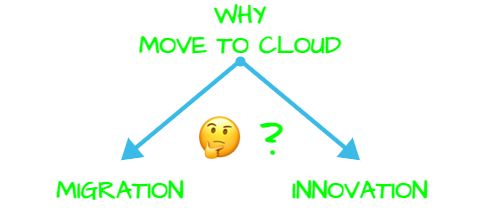Strategy | Cloud Adoption Framework
Part 1 Of 6 in your business cloud journey to Microsoft Azure
Strategy is the start of your journey to the cloud. It is the most important cornerstone to a successful outcome. Now I thought I would start a series of blog posts that will be about the journey to the cloud. How to get from A to Z with the help of Cloud Adoption and how to adapt to the cloud in a structured way. So in this section, I thought I would start this journey and share my thoughts and experiences with the Cloud Adoption Framework at an overall level.
Cloud Adoption is a strategic move by an organization to use cloud services in its operations
This can be done as the public cloud has a lot to offer to create innovation and efficient solutions faster than in traditional data centers. This adds value for your customers and yourselves. The Cloud Adoption Framework (CAF) for Azure is a set of tools, best practices, guidelines, and documentation to help you on your journey to the cloud. CAF for Microsoft Azure, is what I will focus on in this series. But keep in mind that the framework is large and complex. I will try to explain the content in a simpler way. But there is plenty of interesting reading about CAF. The Cloud Adoption Framework is divided into different steps:
- Strategy
- Plan
- Ready
- Adopt
- Govern
- Manage
and the first step we will go through today is strategy.
Strategy
In its simplest form, strategy is a way to adapt the company before starting to use cloud services. Finding an approach to different issues. Why, what does it cost, results, how do I measure costs, returns and how or where do I start??? The first step in strategy is to find justifications for why?
Justifications
Justification 1
will answer the question: Why move to the cloud? - Here you will need to include stakeholders, managers and system/service/application owners to document the reasons and justifications for why the company should adapt to the cloud. In order to do that, you have to understand the different triggers for the motivations.
Justification 2
The next area to touch on is innovation, where you may need the power of the cloud to be more successful in your business or to create new types of offerings.
The most common triggers addressed are:
Migration for:
- Cost savings
- Reduced complexity
- Optimization of handling
- Increased security
- Increased business mobility
Innovation through:
- Global scalability
- Improved customer experience
- Conversion of products
- Think new within the existing market/take more market shares
All this is easier to implement if you start using the cloud and all its services. Of course, it is up to you to decide which services will be useful for your particular business. When you understand why you should move to the cloud, the next step becomes natural.
Business Outcomes
Here you want to be able to answer the question what should we measure? It must be a defined, concise and observed result that can be captured with specific measurement
- Income/Revenues
- Profit
- Cost
- Global access
- New markets or market shares
It is important that these parts are calculable and measurable so that you can define and follow up so that you can deliver this internally. It is important to do this together with leaders within the organization. Finance/Economics, IT Infrastructure Operation and responsible for the applications or services that the company delivers. When we now know why we should move and what we should measure, it is quite natural to work out a business justification.
Business Justification
During this step we need to understand: What is my return on investment? Your company exists because you want to make money (mostly ;-)) so it is important to be able to follow up on how the return on investment is.
As part of the business justification, you want to develop a business case to validate the financial model that supports both justifications and results. Which includes both steps 1 & 2. Microsoft has a number of different tools to help you create clarity in the financial model.
- Total Cost of Ownership Calculator
- Monthly Pricing Calculator
- Cost Management
For example, a CIO & CFO can use Azure TCO to calculate what the current OnPremise environment would cost in the cloud. With the Azure Cost calculator, you can estimate the monthly cost that corresponds to the current environment. And when you have started to establish services in the cloud, you use Azure Cost Management to track your costs in the cloud.
In this way, you can validate whether the costs in the cloud correspond to your expectations or calculations. We will delve deeper into these three tools later. But these three tools are key components of the business case creation phase.
First Project
The next step is to create and decide on a first project. The first project will help you customize your motifs and the technical inputs needed. And to choose the right project, it needs to meet two important criterias
Business Criteria
- Is in operation
- A dedicated owner
- There is a strong justification for moving
Technical Criteria
- Has the fewest dependencies
- Uses the least number of resources (complexity)
These points are of great importance because the commitment from the owner is an extremely important part for each step in the process.
Why?
If an application or service has too many dependencies and assets, this can cause the strategy to take too long to validate and thus slow down the process of making the move to the cloud.
Summary
To sum up the first part regarding strategy, it is about defining the business rationale and the result. When this step is complete, we can move on to the next one… The planning, but that will come in the next blog… Stay tuned
// Nicklas
If you want to read more about the Microsoft Cloud Adoption Framework for Azure, you can do so here …




